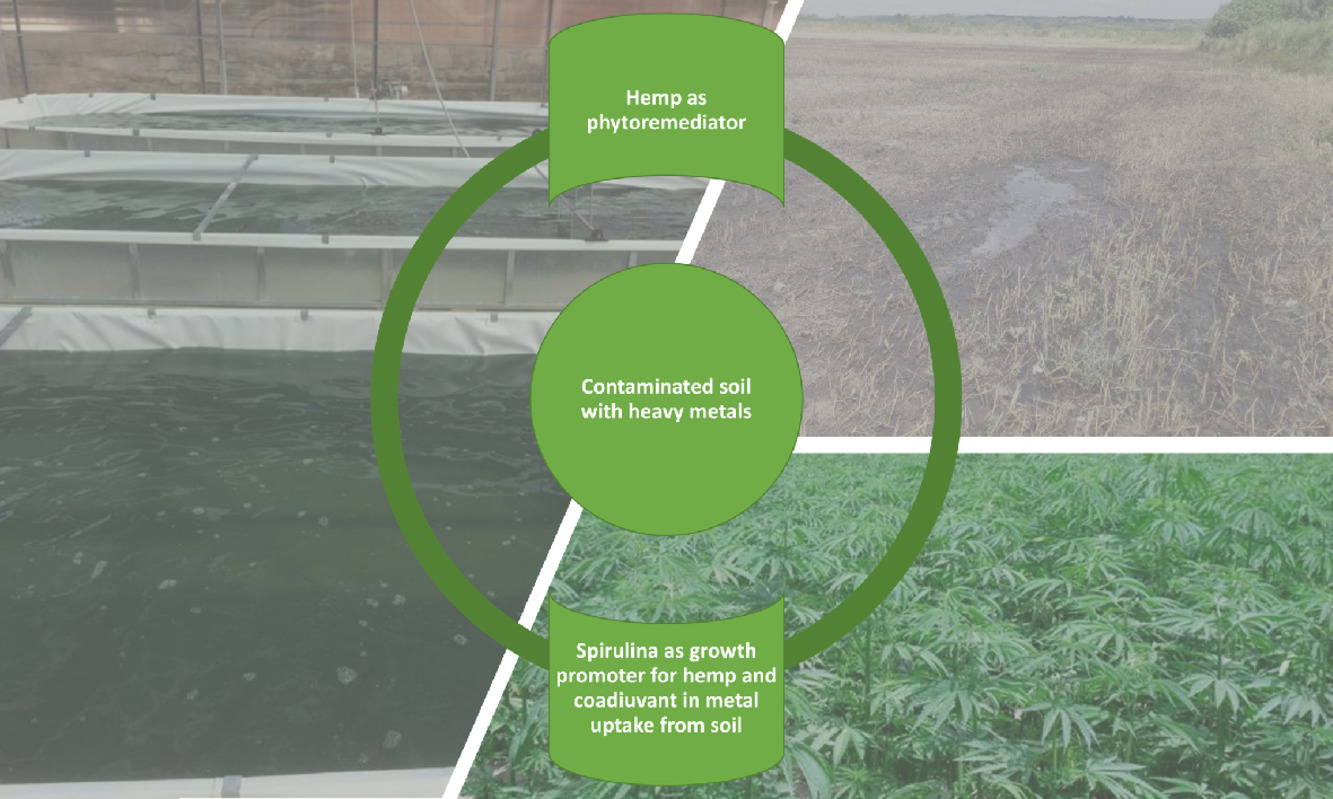Journal:A spectroscopic study to assess heavy metals absorption by a combined hemp-spirulina system from contaminated soil
| Full article title | A spectroscopic study to assess heavy metals absorption by a combined hemp-spirulina system from contaminated soil |
|---|---|
| Journal | Environmental Advances |
| Author(s) | Musio, Biagia; Ahmed, Elhussein M.F.M.H.; Antonicelli, Marica; Chiapperini, Danila; Dursi, Onorfrio; Grieco, Flavia; Latronico, Mario; Mastrorilli, Piero; Ragone, Rosa; Settanni, Raffaele; Triggiani, Maurizio; Gallo, Vito |
| Author affiliation(s) | Polytechnic University of Bari, Innovative Solutions S.r.l., International Centre for Advanced Mediterranean Agronomic Studies of Bari, ApuliaKundi S.r.l. |
| Primary contact | Email: vito dot gallo at poliba dot it |
| Year published | 2022 |
| Volume and issue | 7 |
| Article # | 100144 |
| DOI | 10.1016/j.envadv.2021.100144 |
| ISSN | 2666-7657 |
| Distribution license | Creative Commons Attribution-NonCommercial-NoDerivatives 4.0 International |
| Website | https://www.sciencedirect.com/science/article/pii/S2666765721001150 |
| Download | https://www.sciencedirect.com/science/article/pii/S2666765721001150/pdfft (PDF) |
|
|
This article should be considered a work in progress and incomplete. Consider this article incomplete until this notice is removed. |
Abstract
The efficiency of hemp (Cannabis sativa L.) in remediating sites contaminated with heavy metals has received great attention in recent years. The main advantage of this technology relies on its inherent sustainability, with a potential re-utilization of the significant amount of produced biomass, which acts as a valuable flow resource. In this study, a combined system consisting of Cannabis sativa L. (hemp) and the blue-green alga Arthrospira platensis (spirulina) was tested to clean up soils contaminated with cadmium, chromium, copper, nickel, lead, and zinc. The application of non-targeted nuclear magnetic resonance spectroscopy (NMR) methods combined with Inductively coupled plasma atomic emission spectroscopy (ICP-AES) quantification provided an efficient strategy for detecting residual heavy metals within plant tissues and soil. Importantly, non-targeted metabolomic analysis helped to reveal the relationships between metabolites distribution in hemp tissues and the sequestered metals. It was demonstrated that hemp accumulates copper, chromium, nickel, and zinc preferentially in the leaves, while lead is distributed mainly in the stems of the plant. Moreover, it was found that, at higher concentrations, spirulina acts as a growth promoter, contributing to an increase in the final generated biomass. Results reported in this work indicate that the hemp-spirulina system represents a suitable tool for remediation of metal contaminated soils by modulating biomass production and metals uptake.
Keywords: non-targeted nuclear magnetic resonance, phytoremediation, phycoremediation, Arthrospira platensis, Cannabis sativa L., metal quantification
Graphical abstract:
Introduction
References
Notes
This presentation is faithful to the original, with only a few minor changes to presentation. Some grammar and punctuation was cleaned up to improve readability. In some cases important information was missing from the references, and that information was added.
